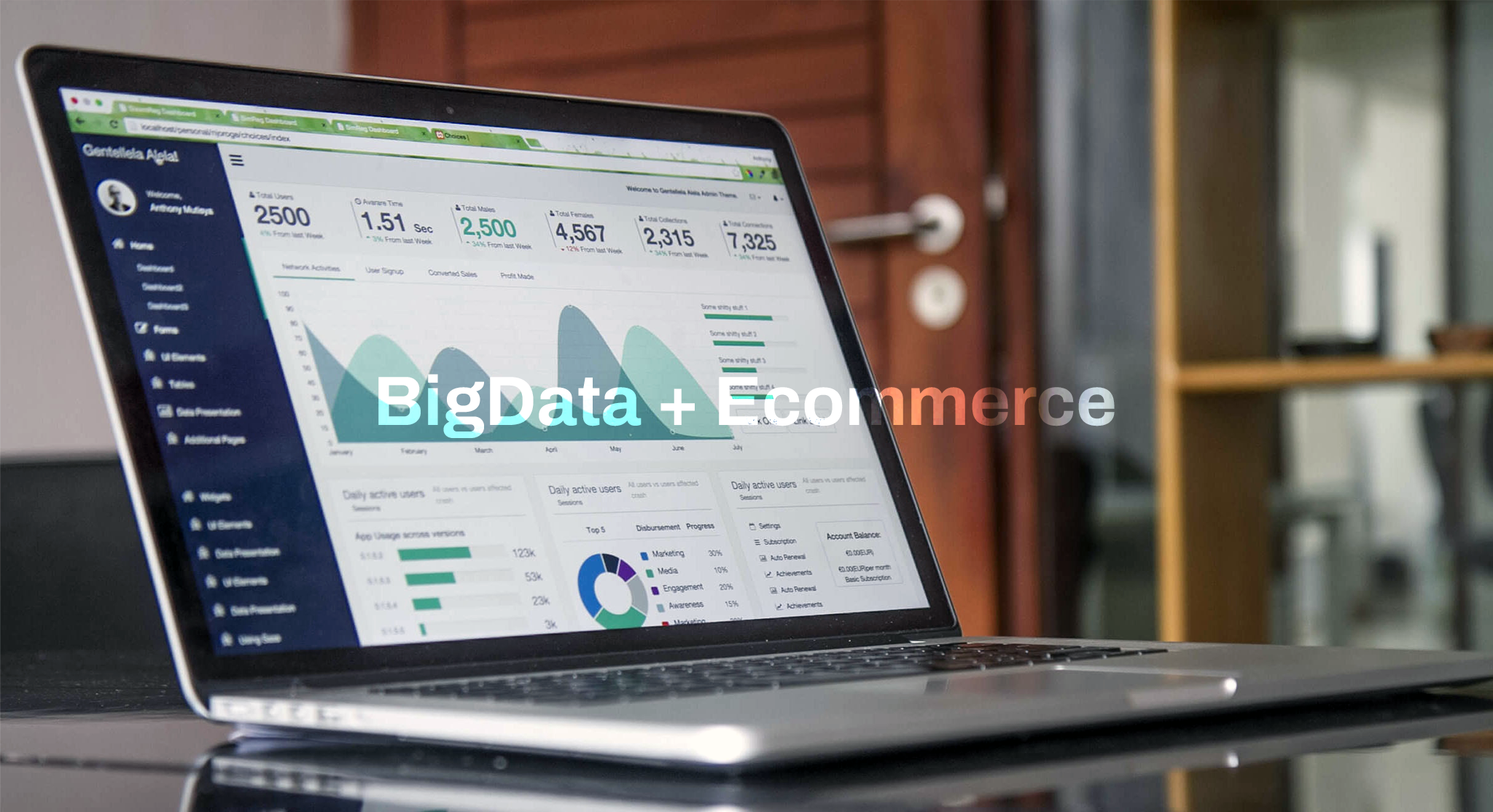The exponential growth in data is revolutionizing how we work, live, and make decisions. The world is expected to generate a collective sum of 175 zettabytes by 2025, and almost every industry depends on how information is analyzed, stored, and processed. As you can imagine, the work involved in building an intelligent big-data platform is immense.
The future of big data lies in technological innovations that are changing how we manage and analyze data. Utilizing the prodigious capabilities of Big Data analytics can power our market research and refine our predictive accuracy. We can do more with big data than ever before, thanks to breakthroughs in computer power, software applications, and innovative data processing methods. However, with the rapid rate at which data is being produced and aggregated across the enterprise, will our analytical capabilities scale fast enough to provide valuable insights in time?
The rise of big data has forced companies to seek experts capable of harnessing complex data processing. But what does the future hold? Experts predict that big data trends will continue to evolve, and data will increasingly come from machines and implanted sensors, generating unimaginable amounts of information. This article explores the evolution of Big Data, its current technologies and applications, and the future developments that will shape the landscape of Big Data.
Big data refers to massive, detailed data sets that are beyond the purview of traditional data processing technologies. Its three features - volume, velocity, and diversity - reflect its diversified nature, rapid expansion, and multi-format source. Large data sets enable organizations to take on previously intractable difficulties. Collecting and storing massive volumes of data for analytics, while a long-standing practice, necessitates an unrelenting commitment to staying up to date on the newest innovations to realize the promise of big data fully.
Big data has become a crucial element in numerous industries (such as finance, healthcare, retail, and manufacturing). Corporations have profited immensely from the ability to collect and analyze huge volumes of structured and unstructured data generated at high velocity from various sources. Big data analytics is undeniably one of the most high-leverage programs and skills in today's job market.
One of the most remarkable advantages of big data is customer insights. Big data analysis provides valuable information about customers' businesses use to refine marketing strategies, improve engagement and conversion rates, and understand customer preferences. Big data also has strategic value, allowing organizations to comprehend customer behavior, optimize workforce planning, improve supply chain efficiency, and predict market trends. Big data analysis allows us to identify new revenue streams and become more competitive.
Here are a couple more examples of Big Data use cases:
Healthcare: In the healthcare industry, big data plays a significant role in identifying disease risk factors, diagnosing illnesses, and monitoring infectious disease outbreaks. During the COVID-19 pandemic, big data analysis helped track the virus's spread, allowing authorities to implement appropriate containment measures and allocate resources more effectively.
Marketing: Big data helps businesses identify trends and patterns in customer behavior, leading to a more profitable business. Big data analysis enables businesses to innovate and redevelop their products, ensuring they remain competitive in the market.
Manufacturing: Manufacturing companies use big data to optimize their production processes, reduce waste, and improve overall efficiency. Big data also plays a crucial role in the development of smart cities by enabling efficient resource management, improving public safety, and enhancing the quality of life for citizens.
Natural Disaster Prediction: Machine learning models can analyze data from various sources (such as satellite imagery and meteorological data) to predict the likelihood and impact of natural disasters, enabling better preparation and response.
Fraud Detection: Financial institutions use big data to identify anomalies in transaction data, helping detect and prevent fraudulent activities.
Read: Working with Big Data on Alibaba Cloud
High-velocity data generated from a myriad of sources (such as social media, IoT devices, and sensor networks) has enabled companies to optimize their operations, develop data-driven strategies, and foster innovation. This analysis delves into the current and future trends of Big Data, elucidating its transformative impact on businesses.
Predictive analytics leverages machine learning algorithms and statistical techniques to mine historical data and anticipate future outcomes. Businesses can predict customer behavior, detect potential fraud, and optimize supply chain management by exploiting Big Data, fostering proactive decision-making and risk mitigation.
Personalization and Customer Experience: Big Data enables businesses to gain a comprehensive understanding of their customers by aggregating and analyzing data from multiple channels. This empowers organizations to personalize marketing campaigns, enhance customer experiences, and drive customer loyalty and retention.
Data-Driven Decision-Making: The integration of Big Data into decision-making processes has led to a shift from intuition-based to data-driven strategies. This transformation equips businesses with actionable insights, fostering efficiency, cost reduction, and competitive advantage.

Big data is poised to have a significant impact on the future of e-commerce by driving improvements in personalization, pricing, inventory management, customer service, product development, user experience, and marketing. Here are some key areas where big data will likely transform e-commerce:
Personalization and Customer Segmentation: Big data helps businesses to analyze customer preferences, browsing patterns, and purchasing behavior, allowing them to create targeted marketing campaigns and personalized shopping experiences. It will help them deliver tailored product recommendations, offers, and promotions, leading to higher conversion rates and customer satisfaction.
Pricing Optimization: Big Data Analysis on supply, demand, and competitor pricing can lead to dynamic pricing strategies. These strategies enable companies to adjust prices in real-time, ensuring they remain competitive while maximizing profit margins. Furthermore, pricing analytics can help identify optimal pricing points and promotional periods for specific products or customer segments.
Improved Inventory Management: Big data can help e-commerce companies optimize their inventory management by predicting demand and identifying trends. This will allow them to adjust stock levels in real-time, reducing the risk of stockouts and overstock situations and ensuring popular products are always available for customers.
Enhancing User Experience: Big data can be used to analyze user behavior on e-commerce websites, identifying areas where users may be experiencing friction or confusion. In the future, on top of using this information to optimize website design, navigation, and usability, AI will be able to use this data to make changes on autopilot.
The Internet has transformed the way companies gather and analyze consumer data. The abundance of information available through social media, online profiles, product reviews, loyalty programs, and CRM systems has created a wealth of big data that can be used to gain insights into consumer habits, likes, dislikes, and preferences. The ability to analyze this data has been enhanced immensely by the use of artificial intelligence (AI), which requires massive amounts of data to improve decision-making processes.
The artificial intelligence (AI) field encompasses a wide range of computer science applications aimed at creating machines capable of emulating human intelligence. These machines can undertake a variety of tasks that previously required human intervention, such as decision-making, problem-solving, and pattern recognition. They do so by continuously adapting and learning from their surroundings, resulting in performance improvements over time.
AI and big data analytics have a synergistic relationship, enabling advanced analytics capabilities like augmented and predictive analytics, which allow businesses to surface actionable insights more efficiently. Machine learning algorithms are a natural fit for big data, as they use statistical models and data-driven algorithms to analyze and identify patterns in large data sets.
Data acquisition has been an integral aspect of business operations for an extended period, but contemporary digital instruments have significantly facilitated this process. The exponential growth of datasets renders manual utilization by individuals or entities untenable.
Artificial intelligence (AI)-empowered applications can rapidly process and analyze both real-time and pre-existing data. Analytics and automation, driven by data and AI, enable businesses to revolutionize their modus operandi (MO). Analytical instruments (such as Microsoft® Azure® Synapse) facilitate the prediction and identification of trends, guiding decisions concerning product innovation, service provision, workflow management, and more. Concurrently, data is rendered accessible through dashboard visualizations, reports, and graphical representations.
Process automation emerges as a consequence of implementing data and AI solutions. Despite AI not surpassing human intellect yet, the technology's ease of adoption and compatibility with diverse formats (including visual, textual, and auditory), bolsters its integration into numerous business practices. Big data and AI are mutually reliant. While each domain remains distinct, their coexistence is vital for optimal functionality. AI relies on data, but its analytical and learning capacities are contingent upon the volume of available information. Big data supplies the requisite input to fuel high-caliber AI systems.
Merely collecting data is no longer sufficient; it's time to take proactive steps. As the world continues to expand, so does the data that comes with it. Big data and artificial intelligence have become increasingly important topics in the realm of computer science. Both areas complement each other to drive success. You can extract more value from your data through artificial intelligence, while big data analytics enable quick, informed decision-making. Big data can improve operations, from strategic planning to overall performance enhancement.
Consumer happiness is critical, and data is the bedrock of corporate success. With the correct big data technology and solutions, you can strengthen customer interactions, streamline processes, and increase profits. The future is here, and big data is the path forward.
Disclaimer: The views expressed herein are for reference only and don't necessarily represent the official views of Alibaba Cloud.

Alanna Gerton is a content writer and the founder of LANA, a platform dedicated to empowering others to discover their full potential through trendy technology and fostering personal growth. Please contact her for inquiries or collaborations:
Email: lana@lanagerton.com
Twitter: https://twitter.com/LanaGerton
LinkedIn: https://www.linkedin.com/in/alannamarinagerton/
Pinterest: https://www.pinterest.com/lanagerton/
Alibaba Cloud Project Hub - December 22, 2020
Alibaba Clouder - June 22, 2020
Alibaba Clouder - June 3, 2019
Alibaba Cloud Community - September 17, 2021
Alibaba-Cloud-GTS - August 25, 2021
Alibaba Clouder - June 24, 2020
 Big Data Consulting for Data Technology Solution
Big Data Consulting for Data Technology Solution
Alibaba Cloud provides big data consulting services to help enterprises leverage advanced data technology.
Learn More Big Data Consulting Services for Retail Solution
Big Data Consulting Services for Retail Solution
Alibaba Cloud experts provide retailers with a lightweight and customized big data consulting service to help you assess your big data maturity and plan your big data journey.
Learn More Realtime Compute for Apache Flink
Realtime Compute for Apache Flink
Realtime Compute for Apache Flink offers a highly integrated platform for real-time data processing, which optimizes the computing of Apache Flink.
Learn More AI Acceleration Solution
AI Acceleration Solution
Accelerate AI-driven business and AI model training and inference with Alibaba Cloud GPU technology
Learn More